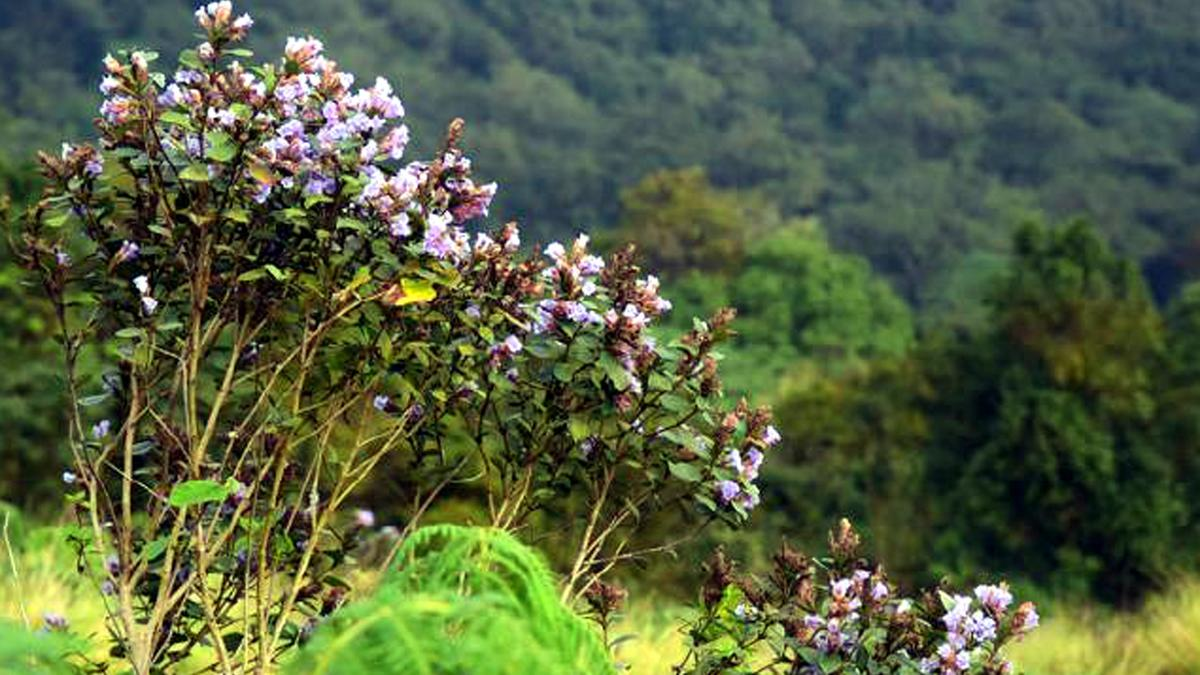Rapid Fire
Neelakurinji Declared as a Threatened Species
- 13 Aug 2024
- 2 min read
Neelakurinji (Strobilanthes kunthiana), a flowering shrub that blooms once every 12 years, is now classified as Vulnerable (Criteria A2c) on the IUCN Red List.
- The species was not previously evaluated under IUCN standards due to its unique blooming cycle and ecological challenges.
- Strobilanthes kunthiana is an endemic shrub of three-metre height, seen only in the high-altitude shola grassland ecosystems of five mountain landscapes of southwest India at an elevation of 1,340–2,600 m.
- The scientific name of the Neelakurinji is named after the Kunthi River in Kerala's Silent Valley National Park where it is abundantly found.
- They are semelparous (reproducing only once in a lifetime) with showy synchronous blooming and fruiting every 12 years at the end of the life cycle.
- Known for their massive blooming, they impart purplish-blue colours to the mountain grasslands and are popularly known as Neelakurinji (Blue Strobilanthes) blooms.
- The species has 34 subpopulations within 14 ecoregions of the high-altitude mountain ranges of southwest India, with 33 subpopulations in the Western Ghats and one in the Eastern Ghats (Yercaud, Shevaroy Hills).
- Most subpopulations are in the Nilgiris of Tamil Nadu, followed by Munnar, Palani-Kodaikanal, and Anamalai mountains.
- Main Threats: Major threats include habitat loss from tea and softwood plantations, urbanisation, invasive species, and climate change. Approximately 40% of its habitat has been lost.
Read more: New Varieties of Neelakurinji Flowers







